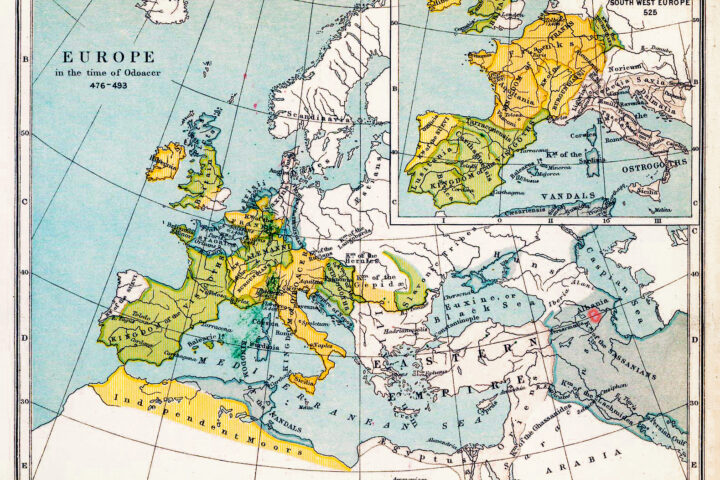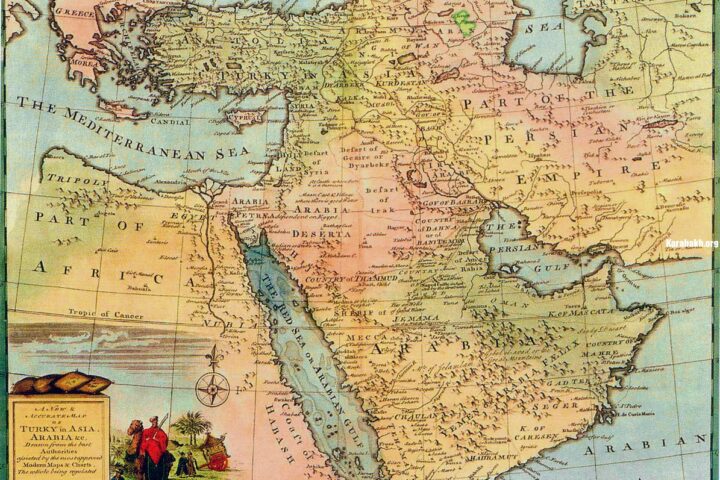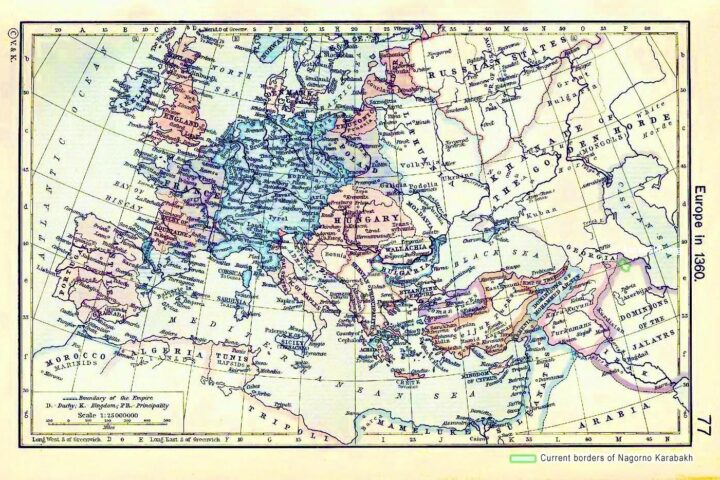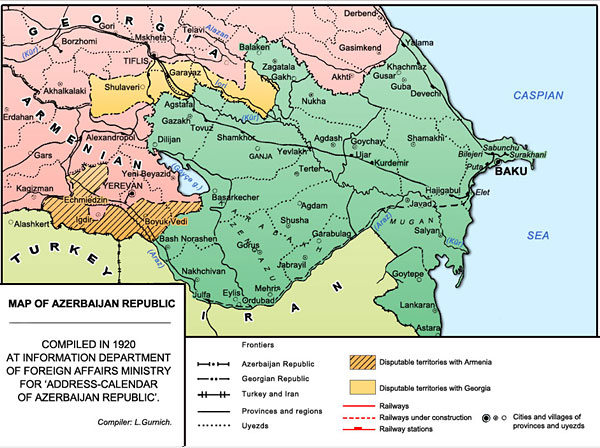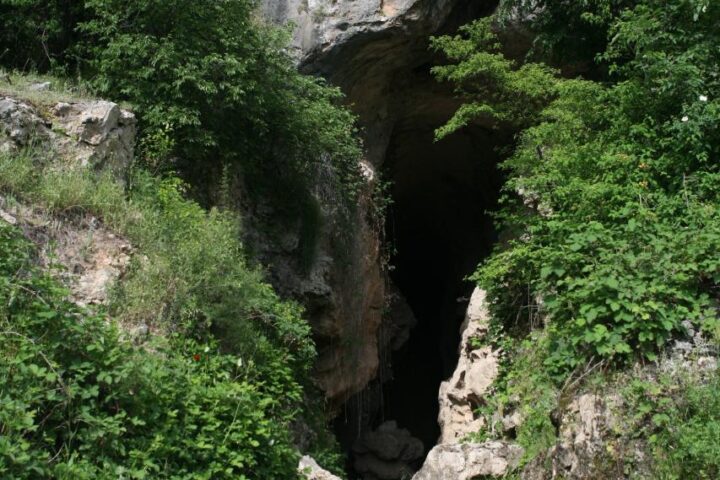Beginning from II c. BC Armenian state that emerged in Upper Euphrates carried out invasive wars against the neighboring countries. Western regions of Albania also underwent Armenian invasion for the period of II-I cc. BC.
As mentioned above, Armenians appeared in the Caucasus regions relatively later. Seemingly, the conditions for the progress of the Armenian expansion in the Caucasus emerged due to the fall of the Persian Ahemenid Empire. In the II c. BC Armenians took control over the so-called Central Armenian plateau and made Armavir located in the Ararat valley the capital for their state.
The ancient authors couldn’t have missed the aggressive advance of the Armenians in the Caucasus. Strabo wrote: «…Armenia, being a small country before, was enlarged by the warfare carried out by Artaksi (Artashes) and Zariadrij… Together they expanded their possessions by occupying part of the lands belonging to the surrounding peoples; in particular, from Mideans they took away Caspiana, Favnitida and Basoropeda [keep in mind this last name for a while]; from the Ibers/Iberians [predecessors of present-day Georgians] – the foothills of Pariadr, Khorzena and Gogarena; from Khalibs and Massiniks – Karenitida and Kserksena; from Kataons – Akilisena and the region around Antitavr; and finally from Syrians – Taronitida».9
In a relatively short period of time, the Armenians having advanced in an extensive territory occupied it. Thus, in II-I cc. so-called «Greater Armenia» was established.
When trying to substantiate the belonging of Karabakh and the whole right bank of the Kura river to Armenia, the Armenian historians refer to the information provided by the authors of antiquity and the ancient Armenian historians. At first sight, it seems that their fabrications match these information.
For example, Strabo writes, that the river of «Araz runs through Armenia».10 The Armenian historians present this as the proof, confirming that the northern bank of Araz, i.e. the land between the rivers of Kura and Araz including Karabakh, belonged to Armenia.
If we apply the information by Strabo «Araz runs through Armenia» to the Albanian territory, located in the land between two rivers of Araz and Kura, then this will contradict another information by the same Strabo, saying, «…the Kura runs through Albania».11 Well then, it is impossible to assume, that the Araz river run through Armenia and the Kura, which, in that case, if to believe the Armenian historians, would have to separate Armenia with Albania «run through Albania». Since, this contradiction spoils the plans of the Armenian historians, one of them, A.A. Akopyan suggested to read Strabo’s information «the Kura runs through Albania», as «the Kura runs along/lengthwise Albania». But seemingly, Akopyan was only superficially familiar with the information by Strabo, who wrote: «…and Kura runs through Iberia [present-day Georgia] and Albania».12 Therefore, if to agree with Akopyan’s interpretation, then «the Kura run lengthwise (and not through) Iberia» too, which is an absolute historical nonsense. As you see, Akopyan’s opinion is entirely wrong.
When using this information by Strabo, we must, first, define which part of the Araz is meant in the information, and second, which historical period does this information reflect. No doubt, the author meant a part of the Araz, which included the territory of present-day Nakhichevan called at that time Basoropeda, which we mentioned above and which was occupied by Armenia in II c BC.
In certain periods of history the Armenian expansion reached to the inner Albanian lands as well. It’s quite possible, that during the invasive wars of II c BC the expansionist aspirations of the Armenian rulers spread for a short period of time, to the territories between the Kura and the Araz rivers, including Karabakh.
However, this gave some Armenian historians guided with nationalistic ambitions grounds to claim, that, ostensibly, «The Right Bank Albania [implying the land between the Kura and the Araz rivers, including Karabakh] for six century long period constituted a part of the centralized slavery state of Greater Armenia…».13
The argument mentioned above contradicts to everything we know about the history of Armenia, since, after the Romans defeated the Armenian ruler Tigran II in 66 BC, there was no «Greater Armenia» any more. Armenia had to give up almost all the occupied territories. And throughout the I-IV cc. AD Armenia couldn’t carry out aggressive policy since it was constantly under changing dependence from either Rome, or Parfia (Iran). Proceeding from these facts, it possible to assume, that during I-IV cc. the territory of the western Albania couldn’t be annexed for a long period of time to Armenia, albeit, separate episodic Armenian raids are not excluded and which might take place and probably, did in this particular historical period. Further, in 387 the Rome and the Sasanid Iran divided Armenia between themselves. According to the agreement, Iran got 2/3 of Armenia, and Rome – 1/3.
As to Albania, its situation in I-IV cc. was far better than that of Armenia’s. And even if sometimes it underwent the Roman and Iranian invasions and had to keep to Roman or Parfian orientation, Albania, differently from Armenia, didn’t lose its sovereignty. In the beginning of II c. AD, when the Romans conquered the whole Caucasus, Albania was the only one to stay sovereign.14
The most important event in the political life of Albania in the second part of I c. AD was the establishment of the power of the Parfian-originated Arshakid dynasty, which ruled the country, with small interruptions till 506-510 AD. Approximately at the same time, the Parfian king Valkash put on the Armenian throne his brother Tiridat. The historical sources (including the Armenian ones) testify, that the Albanian ruler «inherited the Albanian plain with its mountainous part, beginning from the river of Yeraskh (Araz) till the fortress called Khunarakert…».15
Consequently, proceeding from this source, the whole left bank of the Kura from the point, where it adjoined with Araz till the Akstafa region, where the fortress of Khunarakert was situated already in the second half of I c. AD belonged to Albania. Namely in this region were situated Artsakh, Otena (Utik), Tsavdek and Gardman- the regions of historical Albania.
9.Strabo XI, 14, 5
10.Id. XI, 1, 5
11.Id.
12.Id.
13.«Ocherki Istorii SSSR» (Essays on the history of the USSR) (III-IX cc.) Moscow 1958 (in Russian), the section had been written by the Armenian academician S.T. Yeremyan;
14.K. V. Trever «Ocherki po istorii i kulture Kavkazskoy Albanii» (Essays on the history and culture of the Caucasus Albania) Moscow 1959 p.129
15.Moses Khorenatsi II, 8




